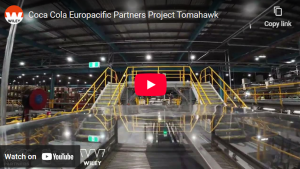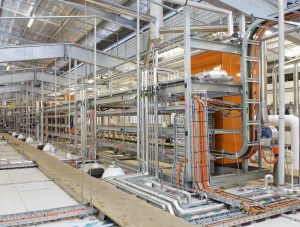- Industry Type: Industrial Manufacturing, Warehousing, Logistics, Food Processing, Distribution
- Author: Andrew Newby
- Service Area: Advice
- Date:
WHAT’S THE DUAL FREQUENCY KENNETH?
Product tracking and traceability is an important tool in the food and beverage industry supply chain. There is a wide range of technology available to manage risks associated with food integrity and timely product delivery.
RFID technology was heralded as the solution to all supply chain problems but has suffered from a slow uptake by industry.
Wal-Mart in the USA were very public in their push for universal implementation to drive efficiencies, however these have not achieved the promised profit increases.
The two major factors limiting the uptake of RFID have been technology and cost. Both of these areas have seen major leaps forward in recent years. Technology has been the main problem, as the chips had significant limitations to their use.
The first hurdle was the operating frequency—as the frequency is increased, the ability to penetrate liquids decreases. However, the lower the frequency, the slower the transfer of data and therefore, the more restricted the use. It became a battle of bandwidth.
For the food industry, the final solution must include fast, reliable reading through liquids. This limited the application to close proximity reading and very controlled movements past readers. IPICO have been developing a solution to this problem with success in a number of difficult RFID environments.
The solution is a dual frequency chip. The chip is powered by a low frequency signal to achieve good penetration, but the chip transfers data back in high frequency. This has achieved high speed data transmission in harsh environments and is so effective—it even works with tags submerged in water.
Another limitation of earlier technology is the operating protocol. The traditional system is called RTF (Reader Talks First). This system required the reader to ‘call’ for all tags in the read area and ask them to talk back in turn (Polling). In a factory environment, this causes problems with multiple readers in close proximity, limiting the tag density and therefore, the read rate.
The new protocol of TTF (Tag Talks First) allows the readers to listen only, to achieve much higher read rates, more successful reads, simpler implementation and no interaction between readers in close proximity.
The TTF protocol, with some minor revisions to improve co-existence with RTF systems, has been granted an ISO 18000-6D standard for asset identification.
RFID dual frequency technology is applied in many areas of everyday living, unbeknown to the public. The Sydney City to Surf, Bridge to Brisbane and Perth City to Surf fun runs have over 150,000 entrants running across the start lines on mass.
This is a demanding test of the anti-collision features of the new Tag Talks First protocol and dual frequency tags. There is plenty of liquid to absorb RFID signals, but in this case it is in the form of runner’s feet.
Other challenges include the significant read range and an extremely high number of tags in the read range at the one time. Each runner is given their individual times, recorded through different sections of the course by the RFID technology.
In the food industry, Chep New Zealand implements this technology on their fresh produce collapsible crates for Progressive/Woolworths supermarkets throughout New Zealand. This involves around 500,000 crates in the supply chain.
Extensive testing was carried out with the IPICO dual frequency tags. The only technology able to achieve 100% read accuracy with a single tag on each crate. The system can read each tag on a pallet of crates full of fresh produce, as it drives through the dock doorway onto the truck.
This technology allows data to be transferred from 156 tags in the few seconds it takes to drive on to the truck, giving the manufacturer 100% accountability of every crate shipped.
Dual frequency looks like a technology that is suited to the food industry for the following reasons:
- Good read range up to 1.5 metres
- Not effected by liquids
- High read rates to match manufacturing speeds
- IS0 Standard compliance
- Simple reader implementation
- Reliable tag reading.
Dual frequency tags are more costly than single frequency tags, however for a captured system where the tags are re-used and system reliability is critical, IPICO’s dual frequency is worth further investigation to assess the application and benefits.
CONCLUSION
RFID has taken a leap forward with dual frequency and looks like a viable solution for the food industry.
There are many technologies available to the food and beverage industry to improve inventory control, work in progress control and provide tracking and traceability of product throughout the supply chain.
Selecting the right technology for your operations can be a complex decision, but can prove a wise investment in the long term.
About the author
Andrew Newby is the Business Development Director at Wiley and can be contacted on:
1300 385 988 or email connect@wiley.com.au.
Further Reading
RFID – wiki page
http://en.wikipedia.org/wiki/Radio-frequency_identification
New high Temperature RIFD tag for Industrial use
http://www.powderhandling.com.au/articles/new-high-temp-rfid-tag-for-industrial-manufacturing
Download to read full article
To read this document you will need Adobe Reader


